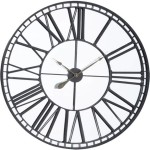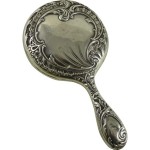Carved Mirror Frames: An Enduring Art Form
Carved mirror frames represent a marriage between functional object and artistic expression. These frames, meticulously adorned with intricate designs, elevate a simple reflection into a statement piece that can enhance the aesthetic of any interior. The practice of carving mirror frames is deeply rooted in history, evolving alongside woodworking techniques and reflecting prevailing artistic styles.
The appeal of carved mirror frames stems from their ability to add texture, depth, and visual interest to a space. Unlike mass-produced, minimalist frames, carved frames possess a unique character, often reflecting the skill and creativity of the artisan who crafted them. This inherent individuality makes them highly desirable for those seeking to imbue their homes with personality and a sense of craftsmanship.
The materials used in creating these frames vary widely, with wood being the most common. Different types of wood, each with its distinct grain and properties, contribute to the overall aesthetic and durability of the frame. Softwoods like pine are relatively easy to carve, making them suitable for intricate designs. Hardwoods such as oak and mahogany offer greater strength and resistance to wear, lending themselves to more substantial and enduring pieces. Other materials, such as bone, ivory, and resin, have also been employed historically, albeit less frequently due to cost and ethical considerations.
The carving process itself is labor-intensive, requiring specialized tools and a high degree of skill. Traditional carving techniques involve the use of chisels, gouges, and mallets to remove wood and create the desired patterns. Modern methods may incorporate power tools and computer-aided design (CAD) software to streamline the process and achieve greater precision. However, even with the aid of technology, the final result still relies on the expertise and artistic vision of the carver.
Historical Significance and Evolution
The history of carved mirror frames is intertwined with the development of mirror-making technology. Prior to the widespread availability of glass mirrors, polished metal surfaces were used, necessitating equally ornate frames to complement their reflective properties. These early frames were often adorned with symbols of status and wealth, reflecting the importance of mirrors as luxury items.
During the Renaissance, carved mirror frames became increasingly elaborate, incorporating classical motifs such as acanthus leaves, scrolls, and mythological figures. This period saw the rise of skilled artisans who specialized in creating these opulent frames for wealthy patrons. The Baroque era further emphasized ornamentation, with frames becoming even more ornate and dramatic, often featuring gilding and intricate relief carvings.
The 18th century witnessed the emergence of new styles, such as Rococo and Neoclassical, which influenced the design of carved mirror frames. Rococo frames were characterized by their asymmetrical shapes, flowing lines, and playful use of natural motifs. Neoclassical frames, on the other hand, embraced a more restrained and symmetrical aesthetic, drawing inspiration from ancient Greek and Roman architecture.
The 19th century brought about industrialization, which led to the mass production of mirror frames. While machine-made frames became more affordable and accessible, hand-carved frames continued to be valued for their quality and craftsmanship. The Arts and Crafts movement, which emerged in the late 19th century, championed handcrafted objects and emphasized the importance of traditional skills, leading to a renewed interest in carved mirror frames.
Types of Carved Mirror Frame Designs
The range of designs available in carved mirror frames is vast, reflecting diverse artistic styles and cultural influences. Some common design elements include floral motifs, geometric patterns, and figural representations. The choice of design often depends on the overall aesthetic of the room in which the mirror will be placed.
Floral motifs are a popular choice for carved mirror frames, adding a touch of elegance and natural beauty. These designs can range from simple, stylized flowers to elaborate, realistic depictions of blossoms and foliage. Common floral motifs include roses, lilies, and acanthus leaves.
Geometric patterns offer a more contemporary and minimalist aesthetic. These designs often feature repeating shapes such as squares, triangles, and circles, creating a sense of order and symmetry. Geometric patterns can be either simple and understated or complex and visually striking.
Figural representations, such as animals, mythological creatures, and human figures, can add a unique and personalized touch to a carved mirror frame. These designs require a high level of skill to execute effectively and can be quite dramatic and eye-catching. Historically, depictions of deities, royalty, or symbolic figures have been common.
Beyond these broad categories, specific styles, such as Victorian, Art Deco, and Mid-Century Modern, each have distinct characteristics that influence the design of carved mirror frames. Victorian frames often feature elaborate ornamentation and dark wood finishes. Art Deco frames are characterized by their geometric shapes, bold lines, and use of luxurious materials. Mid-Century Modern frames tend to be more minimalist, with clean lines and a focus on functionality.
Care and Maintenance of Carved Mirror Frames
Proper care and maintenance are essential to preserve the beauty and longevity of carved mirror frames. The specific methods of cleaning and preservation will depend on the materials used and the age of the frame.
For wooden frames, regular dusting with a soft cloth is recommended to remove surface dirt and debris. Avoid using harsh chemicals or abrasive cleaners, as these can damage the finish. A wood-specific cleaner and polish can be used periodically to maintain the luster of the wood and protect it from drying out.
If the frame is gilded, special care is required to avoid damaging the delicate gold leaf surface. Dusting with a soft brush is the safest method of cleaning gilded frames. Avoid touching the gilded surface with your fingers, as oils and dirt can leave permanent marks.
For frames made from other materials, such as bone or ivory, consult with a professional conservator for specific cleaning and preservation advice. These materials are often more delicate and require specialized handling.
Environmental factors can also affect the condition of carved mirror frames. Excessive humidity can cause wood to warp and crack, while prolonged exposure to direct sunlight can fade the finish. It is best to place carved mirror frames in a location where they are protected from these environmental stressors.
Regular inspection of the frame is also important to identify any signs of damage, such as cracks, chips, or loose joints. Addressing these issues promptly can prevent further deterioration and extend the life of the frame.
Ultimately, carved mirror frames stand as testaments to artistry and craftsmanship, offering enduring beauty and a tangible connection to the past. Their intricate details and unique character make them valuable additions to any home, reflecting not only light but also the rich history of decorative arts.

Vintage Gold Tone Hand Carved Wood Frame Ornate Mirror 29x21 5 Framed Beveled Accent Wall Decor Ss From Peru

Wooden Carved Mirror Darpan Table Top Or Hanging Decorative Ornamental With Handcarved Frame

Wooden Rectangle Shape Handmade Carved Natural Color Teak Wood Mirror Frame

Wooden Vintage Copper Mirror Frames Buy 1 Get Free Antique Engraved Handmade

Wooden Brown Polished Oval Carved Mirror And Frame In The

Wood Carving Mirror Frame Wall Hanging Vintage Stylevictorian Hallway Home Decor

Wooden Handcrafted Mirror Frame Handmade Set Of 2 Pcs Engraved Teak Wood Natural Color

The Deoli N Vintage Inspired Mirror Hand Carved Wooden Wall Frame Without Glass Natural Wood Finish Rustic Barn

Wood Mirror Frame Hand Carved Tulip Vintage Style Wall Hanging Art Home Decor

Old Wooden Mirror Frame Hand Carved Made Mehrab N Home Decor Original








